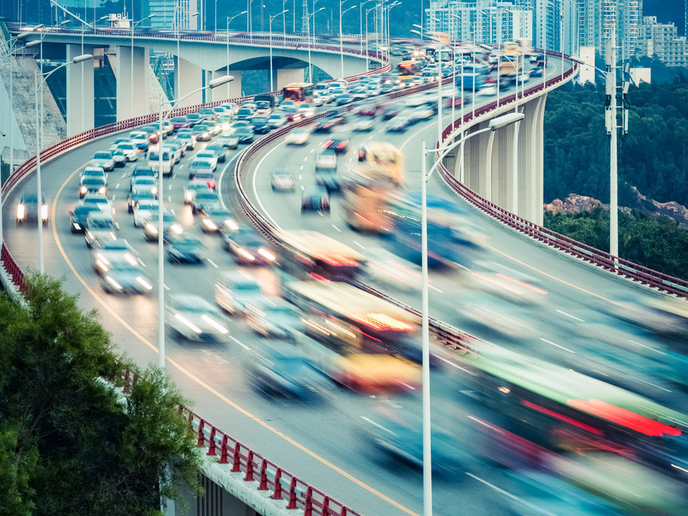Mathematics give a solution to vehicular traffic
Can advanced mathematical tools optimise vehicular traffic? Feedback control of traffic flow, enabled by the development of advanced algorithms and implemented in real time, may provide a positive answer. Undertaken with the support of the Marie Skłodowska-Curie programme, the PADECOT project developed a toolbox of partial differential equations (PDE)-based control algorithms addressing key challenges of traffic flow optimisation, while providing insight into the mechanisms of certain undesirable traffic phenomena, such as ‘stop-and-go’ waves.
A mathematical approach to traffic
Despite properly designed traffic control measures, congestion may be unavoidable nowadays. Its ramifications, however, may be alleviated by exploiting, in addition to conventional traffic control measures (e.g. varying traffic lights’ duration and speed limits), the capabilities of connected and automated vehicles (CAVs). “Everybody has experienced the effects of stop-and-go waves, responsible for traffic congestion’s negative consequences on fuel consumption, emissions, and drivers’ comfort and safety,” says the project’s principal researcher Nikolaos Bekiaris-Liberis. “Viewing traffic flow as ‘fluid’, capturing essential traffic phenomena, naturally gives rise to PDEs, that is, systems that describe the important traffic quantities (e.g. speed) in time-space,” he explains.
Control through proactiveness
An important goal of a traffic flow control algorithm is maximising throughput at bottleneck locations, such as in a tunnel, where vehicles may move at lower speeds. “Flow at bottleneck areas may be controlled by manipulation at a location far upstream of the bottleneck. However, the delay in affecting the bottleneck area flow, which may even vary depending on traffic conditions, may result in a completely different traffic behaviour in the bottleneck area than expected. The key to compensating for this traffic-dependent delay effect is to employ a strategy that predicts the traffic conditions in bottleneck areas and takes the proper action based on this prediction,” notes Bekiaris-Liberis. PADECOT developed predictor feedback algorithms, which were shown in simulation to significantly improve traffic efficiency despite the presence of delay effects. “Picture a highway where control can be applied via manipulating the speed limits at the two end points of a highway. A robust control strategy would properly utilise both actuators to guarantee proper operation when one of the two fails,” elaborates Bekiaris-Liberis. PADECOT also developed algorithms for efficient coordination of different actuators/sensors towards robust and fault-tolerant traffic flow control. It is not only adaptive cruise control (ACC) systems, but also cooperative-ACC systems that have great potential. However, to fully exploit CAVs’ potential, the user should not resort to simplifications or approximations of their dynamics, which may jeopardise safety and efficiency. “For instance, ignoring any delay effect (e.g. due to vehicle-to-vehicle wireless communication) may give rise to traffic oscillations with severe consequences in terms of emissions and safety,” explains Bekiaris-Liberis.
Research progress and exploitation
Ongoing research is developing control algorithms for cooperative AAC (CACC) vehicle platoons, accounting for all essential dynamic phenomena, towards a ‘green’ and efficient traffic system. Implementation and experimental validation with vehicle platoons are also a next goal. The research team is currently investigating the possibility of collaborating with automotive companies via a joint project, towards real application of the developed designs.
Keywords
PADECOT, traffic, vehicle, bottleneck, safety, vehicular traffic, emissions, delay effect, stop-and-go waves, highway







